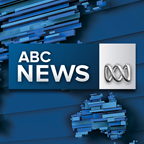
Posted
Reporters at the Ten Network relayed the news of their employer's voluntary administration during a staff meeting.
The network was looking to refinance to the tune of $250 million, after its existing finance was due to expire on December 23.
But Ten's directors said they were left no choice but to appoint administrators from KordaMentha to try to recapitalise or sell the business.
Lachlan Murdoch, who owns a 7.7 per cent share of Ten (via his private investment fund Illyria), and Bruce Gordon, who owns 14.96 per cent (via Birketu), are now teaming up to offer a rescue package to restructure the network, though the details are still to be sorted out.
This will see the two shareholders treated as an association rather than a merged entity to prevent triggering a compulsory acquisition provision or a breach of the existing two-out-of-three cross-media ownership rule.
While this all may appear to be contemporary issues for the company, Ten has faced many hurdles during its lifespan of little over 50 years.
Ten has been in trouble before
The network began in the 1960s, originally named the Independent Television Network, before promptly being renamed the 0-10 Network.
The network's Melbourne-based station (ATV-0) began its official broadcast on August 1, 1964, with other metro stations starting the year after.
Ken Inglis argues in his book, Whose ABC?, that Ten struggled during its early establishment and that the Whitlam government made attempts to buy the network to use it as a second channel for the ABC.
But the network debuted popular shows during this time, such as Number 96, and its high ratings pushed the price higher than the government was willing to pay.
Ten also faced a crisis after Frank Lowy bought the network from Rupert Murdoch.
Mr Murdoch was forced to sell due to changes to the media ownership laws in 1987, which prohibited a media company owning both a newspaper and television station in the same city.
Mr Lowy said that "TV was like any other business", although he quickly found out it was not.
He asked Ian Gow, who had previously worked at the Nine Network, to run the network.
According to Mr Gow, Mr Lowy had "bought the worst house in the best street and wanted to renovate".
Despite the initiatives implemented by Ian Gow, including selling off the Adelaide, Perth and Canberra stations, the network was forced into receivership in September 1990.
Communications corporation CanWest Global bought 57.5 per cent of Network Ten from Westpac Bank for $275 million and then re-established a capital city network in 1995.
During 1999, Ten formed a joint venture with Village Roadshow Limited, Village Ten Online (VTO).
Network Ten argued this was a "strategically defensive move" to develop and market content for the next generation.
Ten stated in its 1999 annual report that the joint venture planned to produce a series of websites targeted specifically at the under-40s market.
The first major announcement of the venture was Scape.com, which was launched in October 2000.
The CEO of Ten Ventures, Peter O'Connell, described Scape as:
"An exciting new presence on the Internet, with all the necessary attributes to appeal to increasing numbers of online service users."
But in March of the following year, less than six months from its launch, Village Roadshow and Network Ten released a joint press release stating that Scape had been placed in voluntary administration and ceased operation.
Both companies had contributed $22 million to the joint venture.
Ten's future
Ten's future is unclear and this will not only impact the network, but some of its key stakeholders.
This recent announcement will affect Bruce Gordon, who holds a 14.96 per cent share in Ten and also owns WIN Television, in two ways.
The first is due to his financial stake in the network, which could expose his investment companies to liability.
Secondly, WIN Television is the regional affiliate of Ten.
Any changes to Ten or its programming would impact WIN and its regional stations across Australia that rely heavily on Ten's programming.
Foxtel is another major shareholder that could be affected by any changes made to Ten.
Any restructure or sale could impact the recent approach by both Foxel and Ten to partner in programming including GoggleBox, Common Sense, A-League and V8 Supercars.
This approach could be used as part of the negotiations for the upcoming Cricket Australia media rights.
Ten holds the rights for the Big Bash League and, while it would not like to lose these rights, a partnership with Fox Sports could allow it still to gain access to some games.
What is clear is that Ten will have to attempt to break the traditional broadcast model and rethink what a television network is in the current media landscape.
If it can achieve this it could potentially place the network in a strong position to compete not only with other local television broadcasters, but also with new media players that are stealing their ad revenue and audience share.
Marc C-Scott is a lecturer in screen media at Victoria University.
Originally published in The Conversation
Topics: television-broadcasting, broadcasting, business-economics-and-finance, australia





























